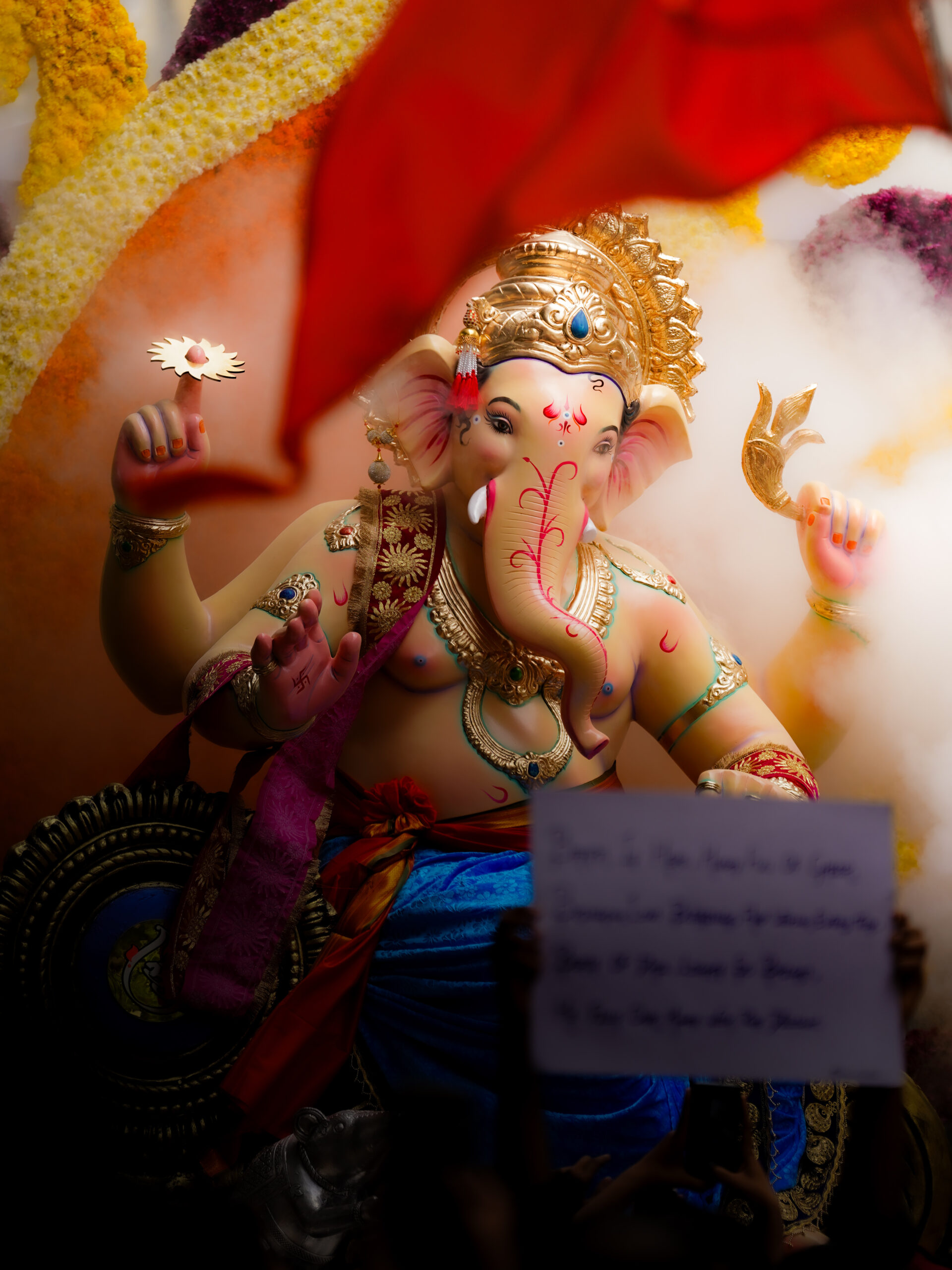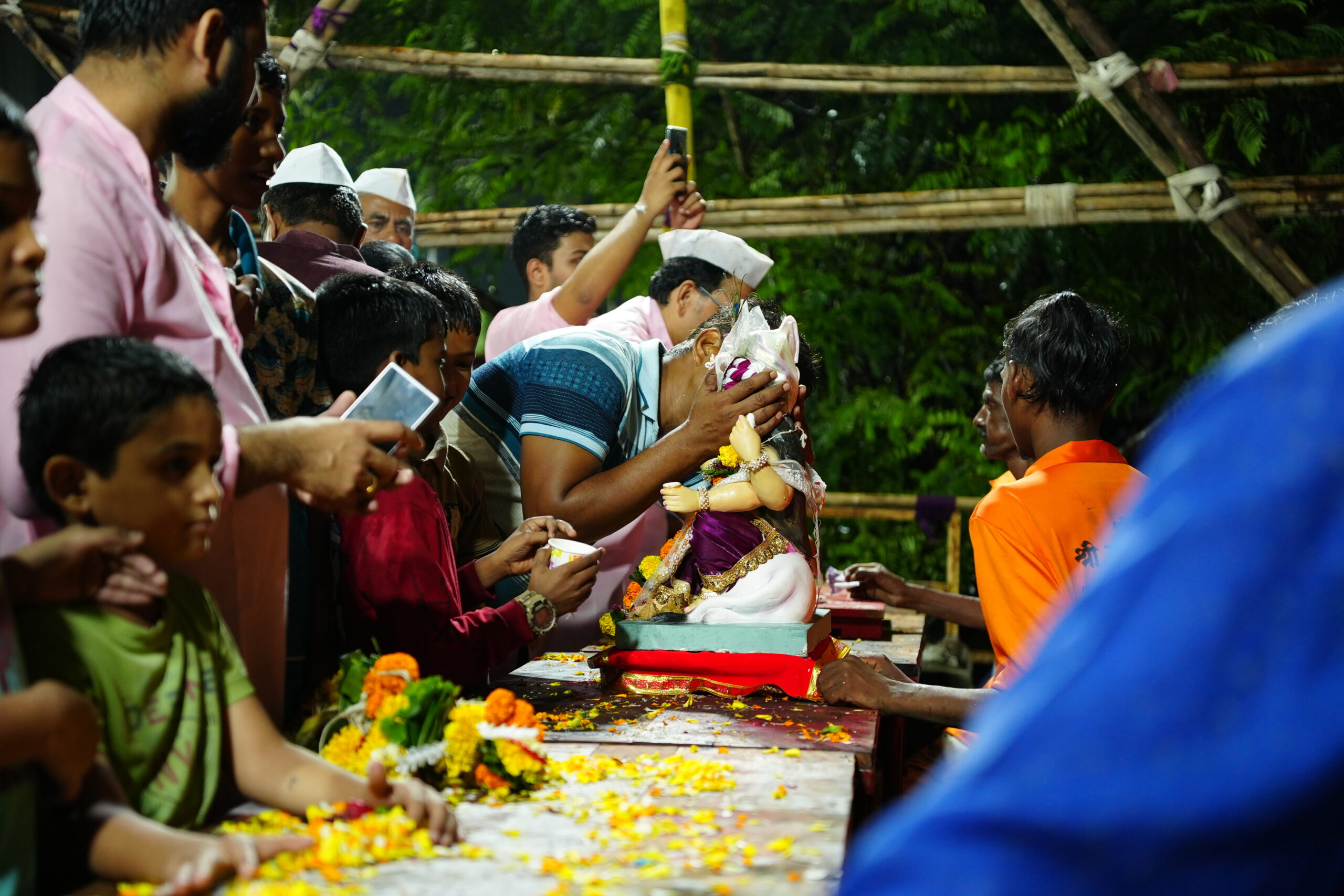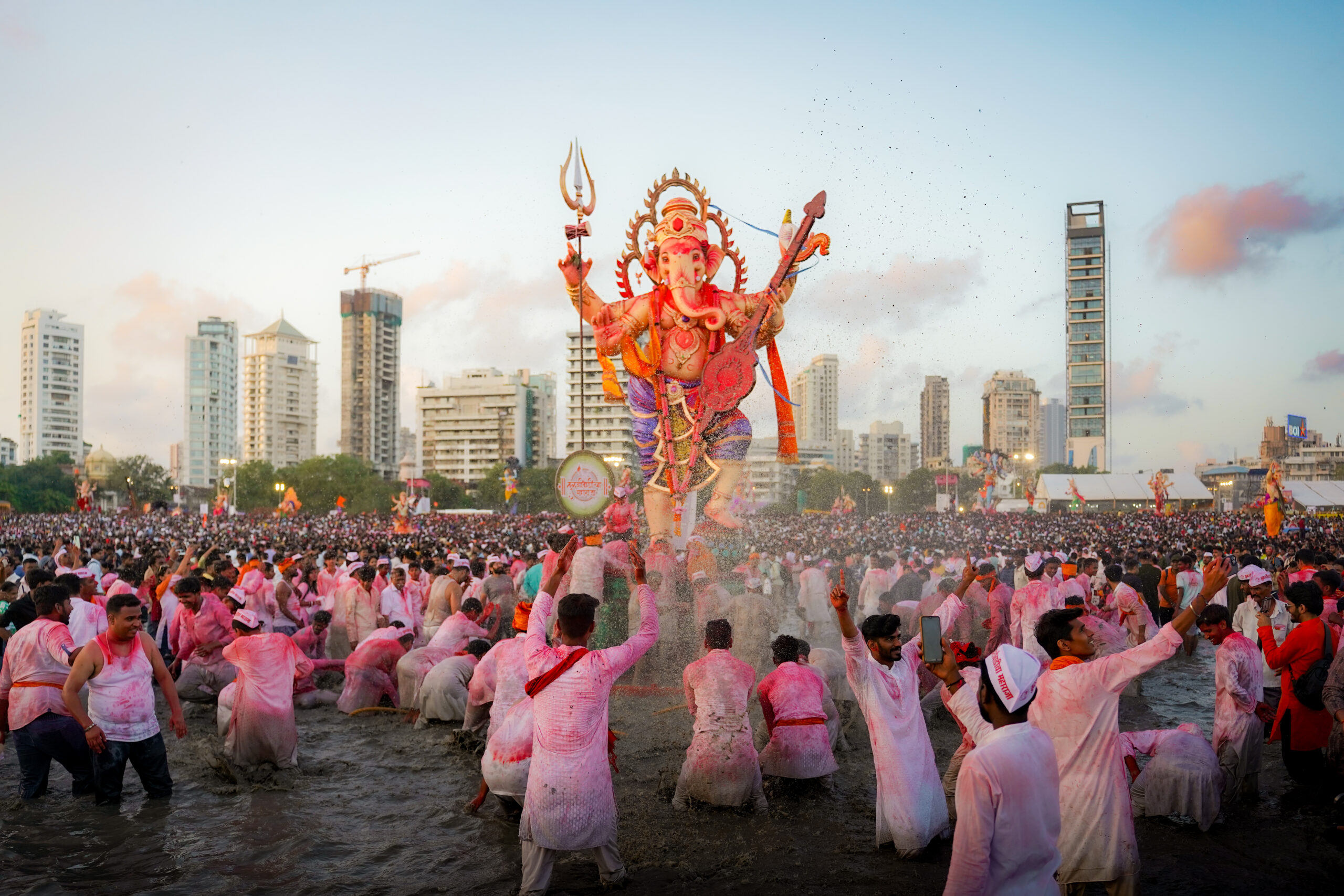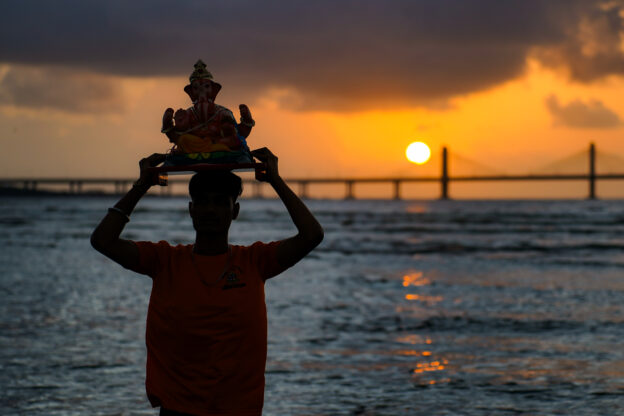The Ganpati festival is one of the most vibrant celebrations in India. Spanning ten days, it marks the arrival of Lord Ganesha into homes and communities, followed by processions and the final immersion in water. For photographers, the festival offers an unmatched opportunity to capture emotions, rituals, and culture in its purest form. Shooting Ganpati from the very beginning, known as Aagman or arrival, until the emotional conclusion at Visarjan is not just about clicking pictures. It is about telling the story of devotion, colour, and community spirit that unfolds before your eyes.
Preparing for the Festival
Before you lift the camera, preparation is key. The Ganpati festival is crowded, chaotic, and filled with movement. Plan your gear carefully. A wide-angle lens works wonders for capturing the scale of processions and pandals. A 35mm or 50mm prime lens is excellent for portraits of devotees, while a telephoto zoom (70-200 for example) helps isolate details when you cannot move close, and add compression to the scene. Carry extra memory cards and batteries, because opportunities appear at every turn.
It is equally important to understand the rituals. Speak with locals or organisers in advance. Knowing when the idol arrives, when Aarti takes place, and how the immersion will unfold helps you anticipate moments instead of reacting to them. Being aware of cultural sensitivities ensures you do not interrupt prayers or block devotees during key ceremonies.
Capturing Aagman – The Arrival

The festival begins with the Aagman procession, when the idol of Lord Ganesha is brought to homes or pandals. This is one of the most photogenic stages, filled with drumming, chanting, and dancing. Focus on the faces of the people carrying the idol. Their expressions reveal pride, responsibility, and devotion. Wide shots of the crowd create context, but do not miss the chance to step in closer for intimate details like a child showering flowers or an elder offering prayers.
Natural light during Aagman can be tricky because the processions often take place in the evening or at night. A fast lens with a wide aperture helps in low light. High ISO performance of modern cameras allows you to preserve the atmosphere without using a flash, which can distract or feel intrusive. If you must use artificial light, diffuse it to maintain softness.
The Pandal Experience
Once the idol is installed, the pandal becomes the heart of celebration. This is where photographers can spend hours observing and documenting rituals. Every pandal is unique in its decoration, and shooting wide frames highlights the craftsmanship of artisans who build elaborate backdrops. Step closer to capture offerings like Modaks, coconuts, and garlands that symbolise devotion.
Portraits here take on deeper meaning. Families gather together, women dress in traditional sarees, and children look in awe at the deity. When shooting portraits, be respectful and seek permission. A simple smile and nod can go a long way. Consider working in black and white for certain frames to emphasise emotion over colour, especially during quiet moments of prayer.
Crowds inside pandals can be overwhelming. Look for elevated positions or corners where you can shoot without blocking the flow of people. Patience is key. Sometimes waiting in one spot allows you to capture a natural alignment of devotees, priests, and the idol in a single frame.
Rituals and Aarti
Daily rituals such as Aarti are powerful moments filled with energy. Flames of oil lamps, rhythmic chants, and clapping hands create an environment that challenges your technical skills. The firelight is warm and flickering, so expose carefully to retain highlights. Focus on the lamp or the expressions of devotees holding it. Including multiple layers in your frame, such as the priest, the idol, and the crowd, helps narrate the collective participation.
Sound is integral to the Ganpati festival, and while photography cannot capture it, your images can imply it. Photograph drummers mid-beat, cymbals clashing, and singers with mouths wide open. Movement blur can be used creatively to convey rhythm. A slightly slower shutter speed while panning can turn drummers into dynamic streaks of colour and motion.
Street Scenes Around Ganpati
Beyond pandals, the streets themselves tell stories. Vendors sell flowers, sweets, and souvenirs. Artisans paint idols in small workshops. Children play with toy drums and balloons. These candid moments add context to your coverage. Use a documentary approach, blending into the crowd and waiting for authentic interactions.
Street photography during Ganpati requires awareness of light and shadow. Narrow lanes may create high contrast conditions. Expose for the highlights, but allow some areas of shadow to retain depth. Reflections in water or glass can also provide creative frames.
The Journey of Visarjan
The emotional peak of the festival comes with Visarjan, the immersion of the idol. Processions are louder, grander, and filled with contrasting emotions of joy and sorrow. Wide shots of massive crowds carrying idols create a sense of scale, while close-ups of teary-eyed devotees reveal intimacy.

At Visarjan, movement is constant. Processions may last hours, with dancing, chanting, and music filling the streets. A wide-angle lens helps capture the energy of groups dancing together. To avoid chaotic frames, look for repeating patterns such as raised hands, synchronised drummers, or colourful powders in the air.
When the idol finally reaches the water, the atmosphere shifts. The loudness gives way to moments of silence as devotees bid farewell. This is when you can switch to a quieter, more reflective style of photography. Silhouettes of the idol against the water or the horizon are powerful images. Children watching from their parents’ shoulders or elders folding hands in prayer capture the emotion of parting.
Be cautious around water during Visarjan. Keep gear protected with waterproof covers and carry minimal equipment. The energy and crowd density can be overwhelming, so safety must always come first.
Storytelling Through Sequencing
Once the festival concludes, the task of storytelling begins. Review your images not as single frames, but as a sequence. Start with the anticipation of Aagman, move through rituals and community interactions, and end with the bittersweet farewell of Visarjan. Including wide shots, medium shots, and close-ups ensures variety. Look for a balance of celebratory and emotional moments, because the Ganpati festival is as much about joy as it is about devotion.
Editing plays a vital role. Do not oversaturate colours, because authenticity matters. Sometimes muted tones highlight raw emotions better. For a cohesive series, maintain consistency in your colour grading or black and white conversions.
Respect and Responsibility
Photographing Ganpati is a privilege. Remember that for devotees this is not just an event, but a deeply spiritual experience. Respect boundaries, avoid obstructing rituals, and never treat people as mere subjects. Offering a copy of your photo to families or organisers is a simple gesture of gratitude.
Also be mindful of the environment. Immersions place stress on rivers and seas, and many communities now embrace eco-friendly idols. Documenting these efforts can help raise awareness about sustainability. As a photographer, you carry the power not only to record culture, but also to influence positive change.

Conclusion
From the joyous arrival of Aagman to the emotional farewell of Visarjan, the Ganpati festival is a complete journey. For photographers, it offers lessons in anticipation, patience, and respect. Every frame has the potential to tell a story, whether it is the sparkle in a child’s eyes or the grandeur of thousands walking together. Shooting Ganpati is not just about capturing images. It is about experiencing a festival where devotion and celebration meet, and translating that experience into photographs that will resonate long after the drums fall silent.

